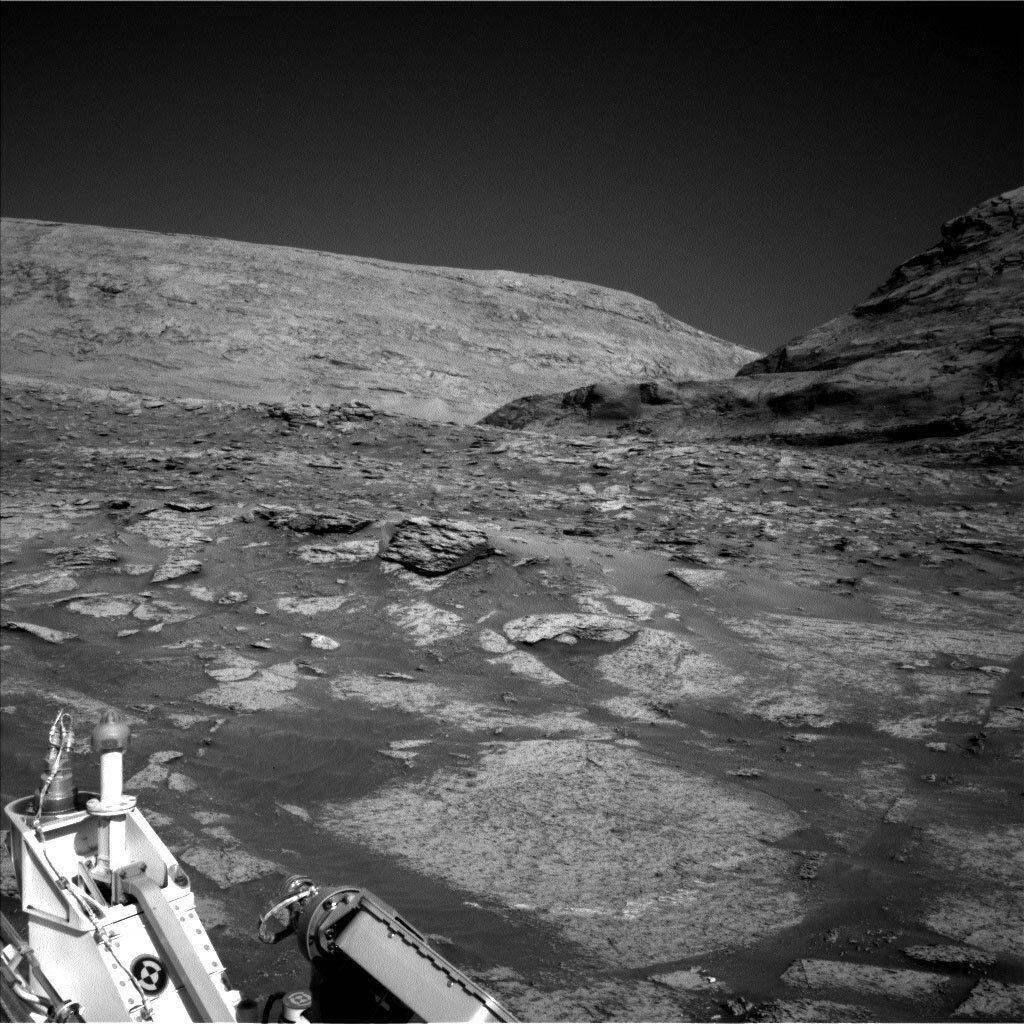2 min read

We are continuing our traverse towards Mount Sharp and are passing through an area of more resistant buttes or mesas, some of which can be seen in the image above, and the larger Rafael Navarro Mountain. The spectacular scenery is providing our camera teams with some incredible images to focus on, which will be used to help interpret the origin of these buttes.
Our recent workspaces have been amazing too, with unusual textures, abundant nodules, and dark and white veins. Today’s workspace was no exception with a wealth of interesting features, just waiting to be analyzed and understood by us Earthlings. However, just like on Earth, we had to dedicate parts of our usual weekend science time to doing some housekeeping – a series of routine checks on rover and instrument health. APXS will analyse their calibration target, and MAHLI and Mastcam will take images of the rover wheels. The wheel imaging is a periodic, routine measurement, taken every 1000 metres, to document the health of the wheels and to flag any issues. This takes a lot of resources, as the rover adjusts its position four times to give Mastcam and MAHLI better access to each of the wheels. At least this housekeeping activity is more fun than those many of us will be undertaking this weekend!
As a result, we had less time to spend doing science activities and had to pick our targets carefully today. APXS and MAHLI will analyze a rough bedrock target "Bregout" here, whilst ChemCam and Mastcam will analyse some erosion resistant nodules ("Valeuil") and a dark grey fin or layer of material, which looks different to the bedrock below ("Limeuil.") ENV will continue its monitoring of the environment, with tau measurements (measuring dust in the atmosphere around us) and a series of dust devil movies, which aim to capture dust devils in the distance. Before we leave this spot, Mastcam will take more images of the buttes around us. Then we drive onwards, through the buttes, in search of more discoveries!
Written by Catherine O'Connell-Cooper, Planetary Geologist at University of New Brunswick







